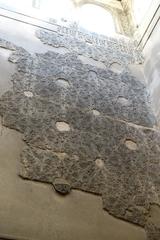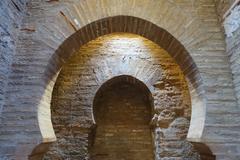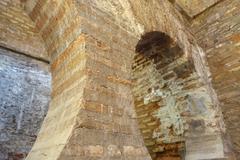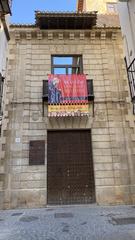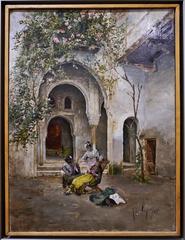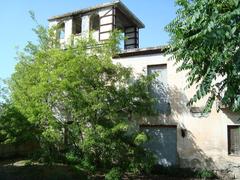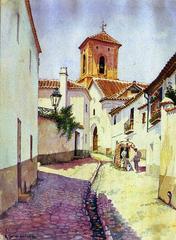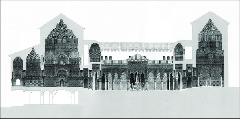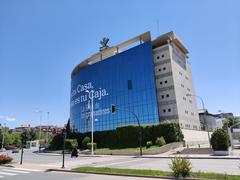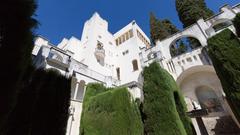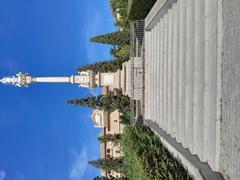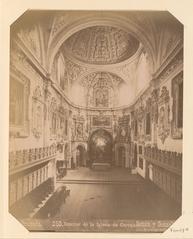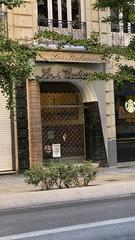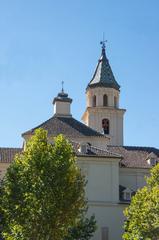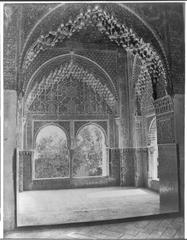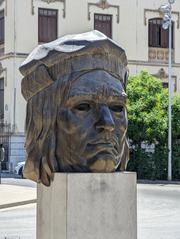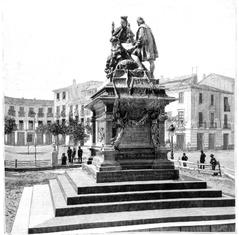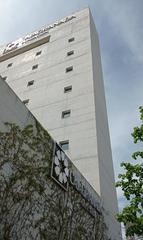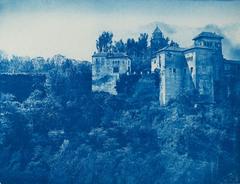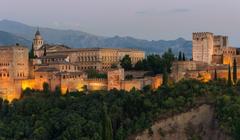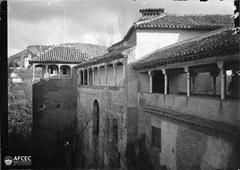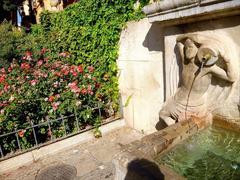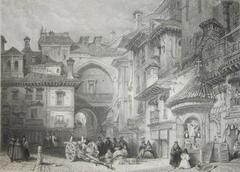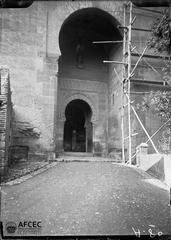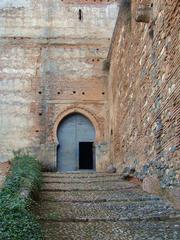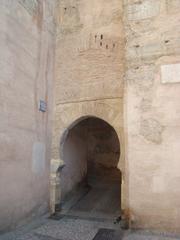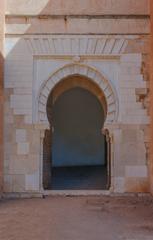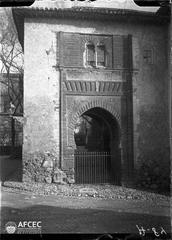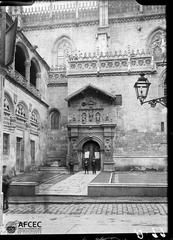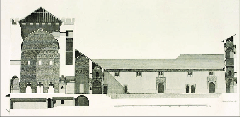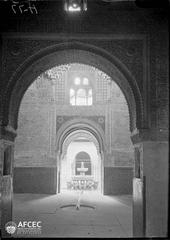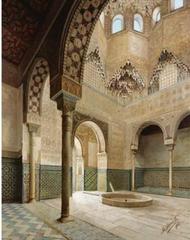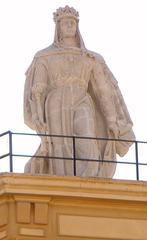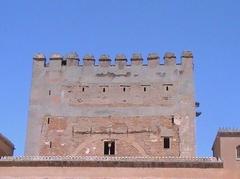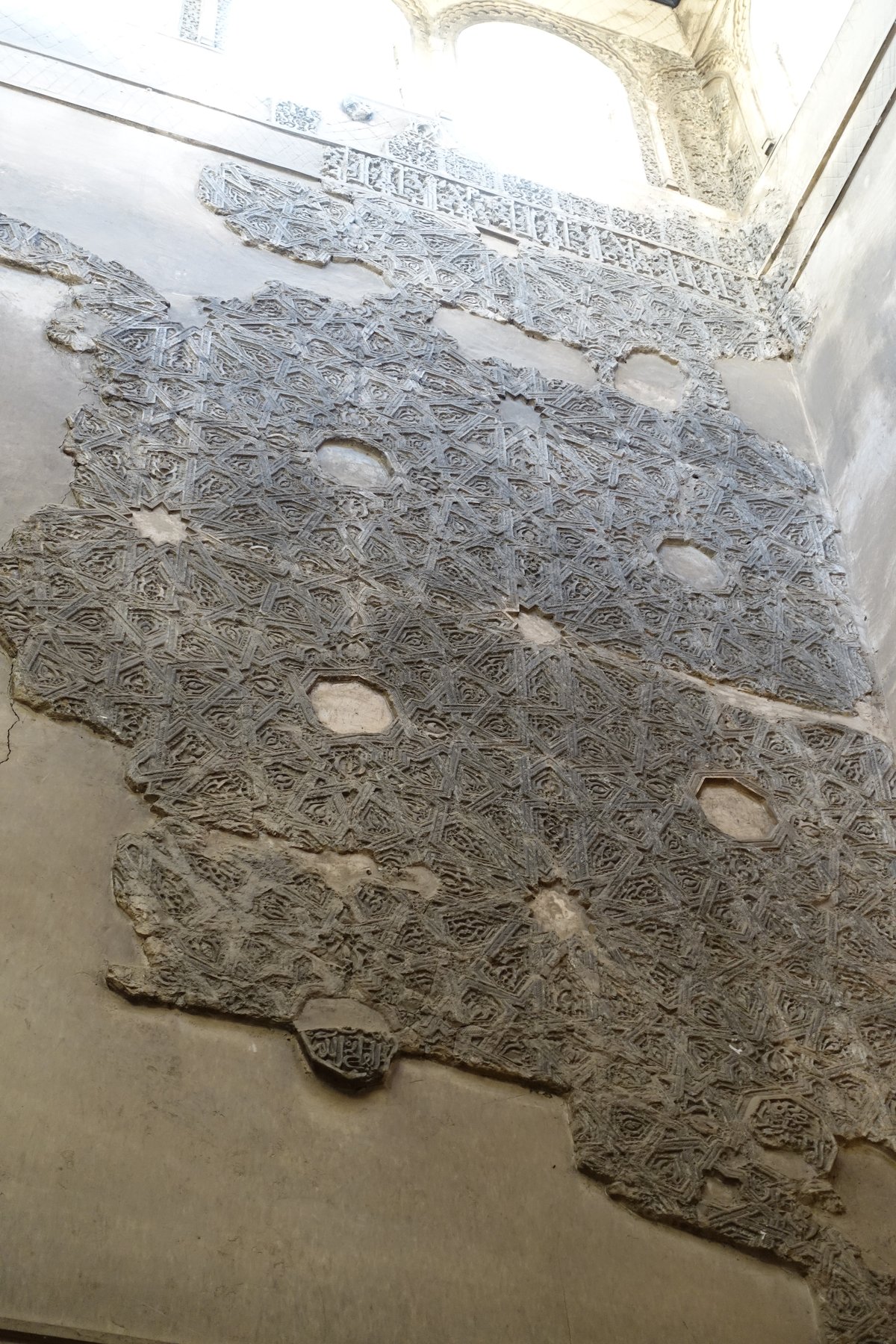
Baño De La Mezquita Alhambra Granada, Spain: Visiting Hours, Tickets, and Travel Guide
Date: 14/06/2025
Introduction
The Baño de la Mezquita stands as one of Granada’s most evocative historical sites, offering visitors a vivid window into the sophisticated Islamic culture that once flourished in al-Andalus. Located within the celebrated Alhambra complex and echoed by a sister site in the Albaicín district, this centuries-old Moorish bathhouse preserves the architectural ingenuity, ritual significance, and social customs of Nasrid-era Granada. Its beautifully preserved chambers, star-shaped skylights, and ingenious hypocaust heating system reveal the advanced engineering and artistic sensibilities of its creators. This guide provides all the essential information you need—visiting hours, ticketing, accessibility, travel tips, and nearby attractions—ensuring that your visit to the Baño de la Mezquita is enriching and memorable. For the most up-to-date details and virtual resources, consult the Alhambra Official Site, Explorial, and Official Granada Tourism.
Table of Contents
- Introduction
- Origins and Historical Background
- Cultural and Religious Significance
- Architectural Features
- Visiting Information: Hours, Tickets, Accessibility
- Guided Tours and Virtual Experiences
- Practical Travel Tips and Nearby Attractions
- Frequently Asked Questions (FAQ)
- Conclusion and Final Tips
- Call to Action
- References
Origins and Historical Background
The Baño de la Mezquita, or Mosque Baths, dates back to the 11th and 14th centuries, representing two key periods in Granada’s Islamic history. The older bathhouse in the Albaicín district was built during the Zirid dynasty, while the Nasrid-era bathhouse within the Alhambra was constructed adjacent to the royal mosque in the 14th century. Both bathhouses reflect the centrality of ritual purification (wudu and ghusl) in Islamic practice, and the evolution of communal bathing customs from Roman and Visigothic traditions (Alhambra Official Site, Explorial).
After the Christian conquest in 1492, many Islamic structures were converted or abandoned. The Alhambra’s mosque was transformed into a chapel, and the bathhouse’s religious function faded. Nevertheless, the physical structures endured, surviving centuries of neglect until restoration projects in the 20th century revived interest and preserved their unique heritage (Alhambra Restoration).
Cultural and Religious Significance
Islamic bathhouses (hammams) in al-Andalus were not only places of physical cleansing but also centers of social, religious, and political life. The Baño de la Mezquita’s proximity to the mosque underscored its role in ritual purification, a prerequisite for prayer and a marker of spiritual discipline. Beyond religious duties, hammams were gathering places for conversation, relaxation, and community events, fostering social cohesion and equality among Granada’s diverse population (Nomads Travel Guide, Explorial).
The architectural symbolism—star-shaped skylights evoking the heavens, horseshoe arches, and intricate tilework—embodies Islamic values of beauty, harmony, and spiritual reflection. The preservation of the Baño de la Mezquita represents a commitment to honoring Granada’s multicultural past and understanding the daily life of its medieval Muslim inhabitants.
Architectural Features
Layout and Structure
The Baño de la Mezquita follows the traditional sequence of an Islamic hammam:
- Vestibule (Apodyterium): Changing area for visitors.
- Cold Room (Frigidarium): Initial cooling chamber.
- Warm Room (Tepidarium): Central space adorned with decorative elements and skylights.
- Hot Room (Caldarium): Heated via a hypocaust system beneath the floor.
- Service Areas: Remnants of furnaces and water channels.
Materials and Design
- Construction: Primarily brick and stone, with insulating walls and tiled floors for efficient heat retention.
- Decorative Details: Horseshoe arches, carved stucco, and azulejos (colorful ceramic tiles) featuring geometric and floral motifs.
- Skylights: Star-shaped openings in the vaulted ceilings create dynamic lighting and ventilation, enhancing both ambiance and spiritual symbolism.
- Heating and Water Supply: The hypocaust system, inherited from Roman technology and refined by Islamic engineers, distributed hot air under floors and walls. Water was sourced from the Darro River via the Acequia Real, demonstrating advanced hydraulic engineering (Alhambra Water System).
Visiting Information: Hours, Tickets, Accessibility
Opening Hours
- Alhambra Complex: Generally open daily from 8:30 AM to 8:00 PM (April–October) and 8:30 AM to 6:00 PM (November–March).
- Albaicín Bathhouse: Open Tuesday to Sunday, 10:00 AM to 6:00 PM; closed Mondays.
- Note: Hours may vary on public holidays or for conservation. Always confirm on the official website.
Tickets
- Alhambra Baño de la Mezquita: Included with general Alhambra admission. Due to high demand (daily visitor limits), purchase tickets well in advance via the official site or reputable vendors (GetYourGuide, Viator).
- Albaicín Bathhouse: Modest entry fee (about €5), with discounts for students, seniors, and groups. Tickets available onsite or online (Granada Tourism).
Accessibility
- Physical Access: Both bathhouses offer partial accessibility. Some chambers have uneven floors, narrow doorways, and steps, which may challenge wheelchair users. Contact visitor services for detailed assistance and accommodations (Official Granada Tourism).
- Facilities: Restrooms are located near main entrances; limited food options inside the Alhambra—plan accordingly.
Guided Tours and Virtual Experiences
Guided tours that include the Baño de la Mezquita provide valuable historical, architectural, and cultural context. These tours are typically available in multiple languages and can be booked in advance through the Alhambra Official Site or local tourism offices. For independent travelers, informative panels and audio guides (available onsite or through the Audiala app) offer a self-guided alternative. Virtual tours and interactive resources are also accessible online (Explorial).
Practical Travel Tips and Nearby Attractions
- Best Times to Visit: Early morning or late afternoon for fewer crowds and optimal lighting for photography.
- Suggested Itinerary: Combine your visit with the Nasrid Palaces, Generalife Gardens, and the Albayzín district for a comprehensive Granada experience.
- Dress and Footwear: Wear comfortable, sturdy shoes for walking uneven surfaces.
- Photography: Permitted without flash. Respect restrictions to preserve delicate interiors.
- Events: Cultural events and exhibitions are occasionally held at or near the site. Check local tourism resources for schedules.
Nearby Sites:
- Alhambra Palace and Nasrid Palaces
- Generalife Gardens
- Plaza de los Aljibes and Puerta del Vino
- Albaicín district and Mirador de San Nicolás
(Tricks and Trips, Legado Nazarí, Adventurous Miriam)
Frequently Asked Questions (FAQ)
Q: Are tickets for Baño de la Mezquita sold separately?
A: No, entry is included with the general Alhambra ticket or available onsite for the Albaicín bathhouse.
Q: What are the visiting hours?
A: For the Alhambra, typically 8:30 AM–8:00 PM (April–October), 8:30 AM–6:00 PM (November–March). For the Albaicín bathhouse, Tuesday–Sunday, 10:00 AM–6:00 PM.
Q: Is the bathhouse accessible for people with disabilities?
A: Partial accessibility; some areas may be difficult for wheelchair users. Contact visitor services for details.
Q: Are guided tours available?
A: Yes, guided and self-guided tours are available; some group tours may skip the bathhouse, so check before booking.
Q: Can I take photos inside?
A: Photography is allowed without flash.
Conclusion and Final Tips
The Baño de la Mezquita is a hidden gem that encapsulates the artistry, spirituality, and ingenuity of Islamic Granada. Its preservation offers an immersive journey into the past, where ritual, social life, and architectural innovation converge. To ensure a seamless visit, secure your tickets early, consult official sources for the latest information, and consider guided or virtual experiences to enrich your understanding. Pair your exploration with other historical landmarks for a full appreciation of Granada’s multicultural legacy.
Call to Action
Plan your visit today by checking the latest information on the Alhambra Official Site, Granada Tourism, and Explorial. Enhance your journey with the Audiala app for audio tours and insider tips, and follow us on social media for updates, inspiration, and exclusive content on Granada’s historical wonders.
Images: Alt tag: Interior view of Baño De La Mezquita showing star-shaped skylights and vaulted ceilings
- Exterior view of the bathhouse with horseshoe arches (alt=“Baño de la Mezquita horseshoe arches Granada”)
- Map of Albaicín district highlighting Baño de la Mezquita location
Internal links:
References
- Alhambra Official Site, 2025, Patronato de la Alhambra y Generalife
- Explorial Guide to Baño de la Mezquita, 2025
- Official Granada Tourism, 2025
- Tricks and Trips: Visiting the Alhambra, 2025
- Thrilling Travel: Tips for Visiting the Alhambra, 2025
- Nomads Travel Guide: Baño de la Mezquita, 2025
- Legado Nazarí Blog, 2013
- Adventurous Miriam: The Alhambra Tickets, Map & Itinerary, 2025
